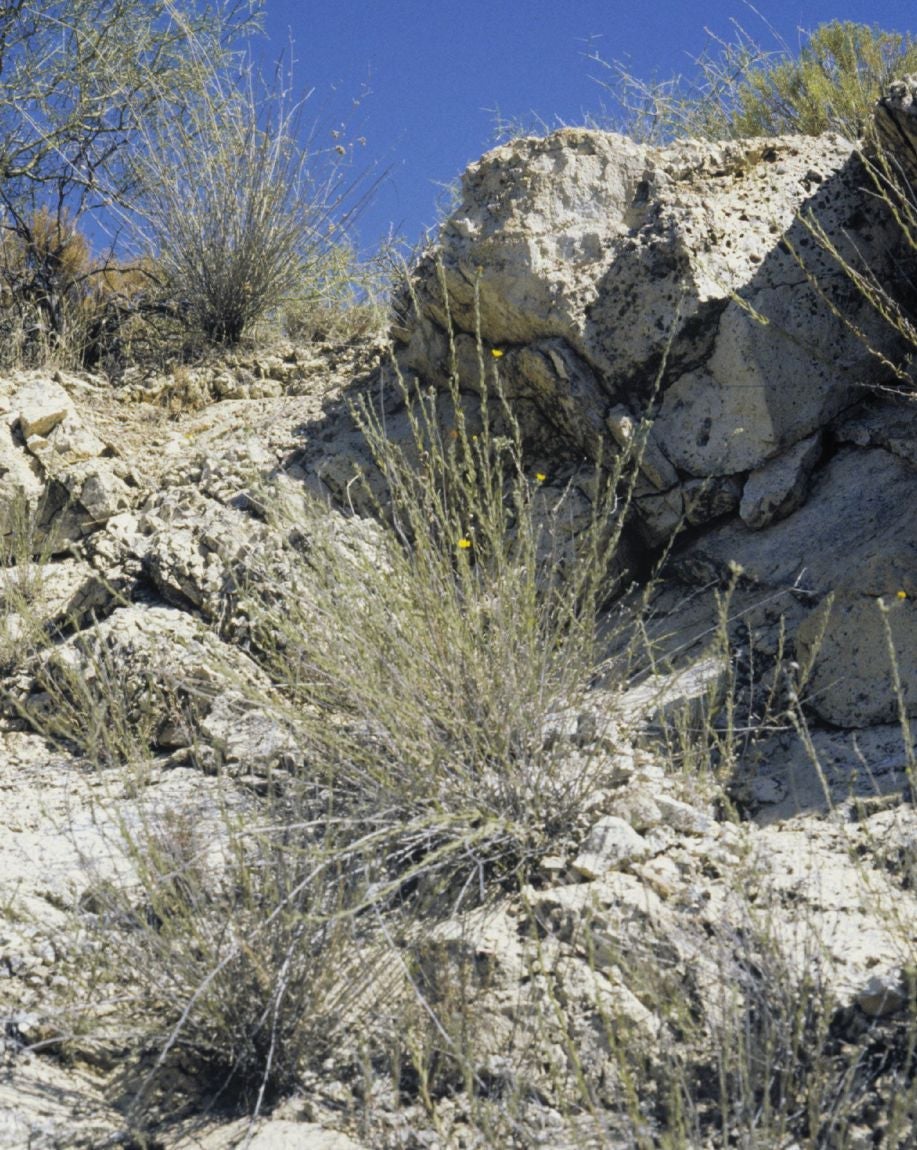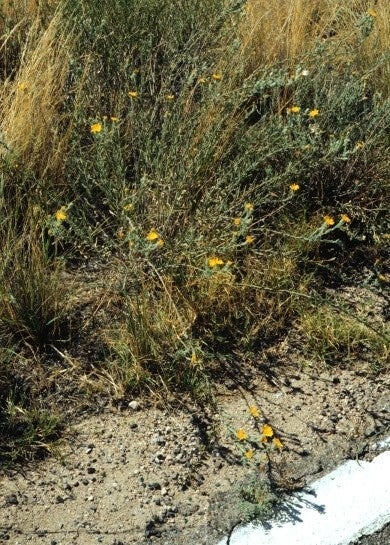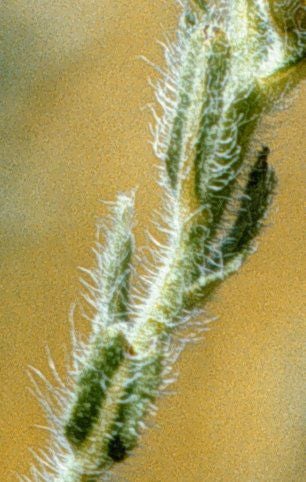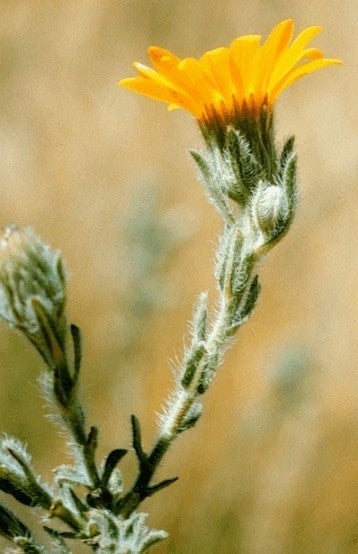Heterotheca marginata Semple is a rare species found in Upper Sonoran desert in the Superstition Mts. and Pinal Mts. of southern Arizona. Herbage is abundantly long-hirsute.
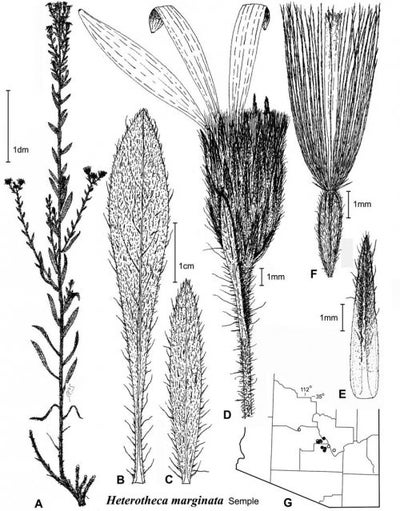
Figure 32. Morphology and distribution of Heterotheca marginata. A. Habit. B-C. Lower stem leaf and upper stem leaf, respectively, adaxial surface. D. Head with only some florets drawn. E. Mid series phyllary with chlorophyllous zone dark; upper margins usually anthocyanotic. F. Mature achene with disc corolla attached. G. Distribution in southern Arizona based on all collections seen.
Last revised 21 April 2025 by J.C. Semple
© 2025 J.C. Semple, including all photographs unless otherwise indicated
1-4. Heterotheca marginata, Semple & B. Semple 10499,
Maricopa Co., Arizona. 1. Habitat. 2. Large plant next to road margin (white line in lower right corner of image). 3. Long-haired leaves. Branch of inflorescence.




